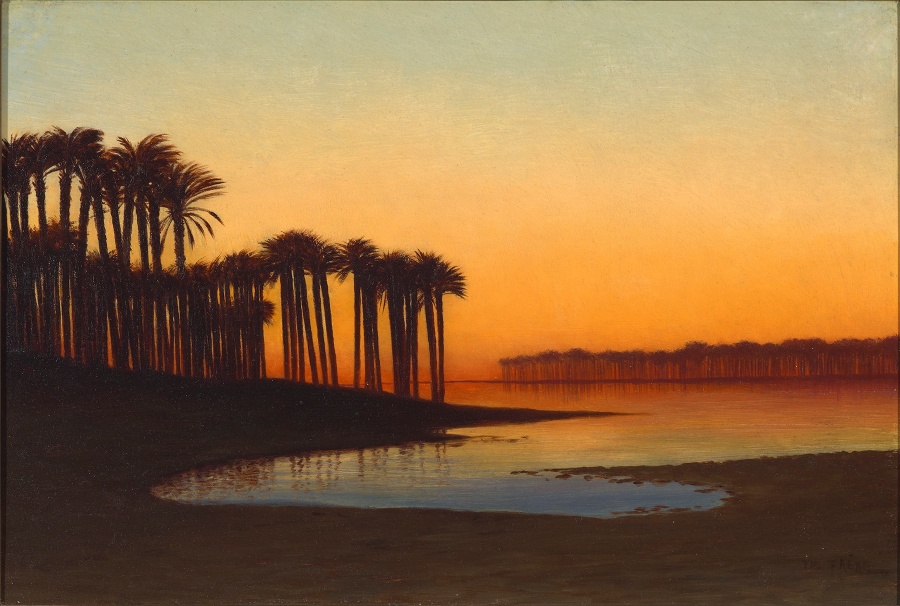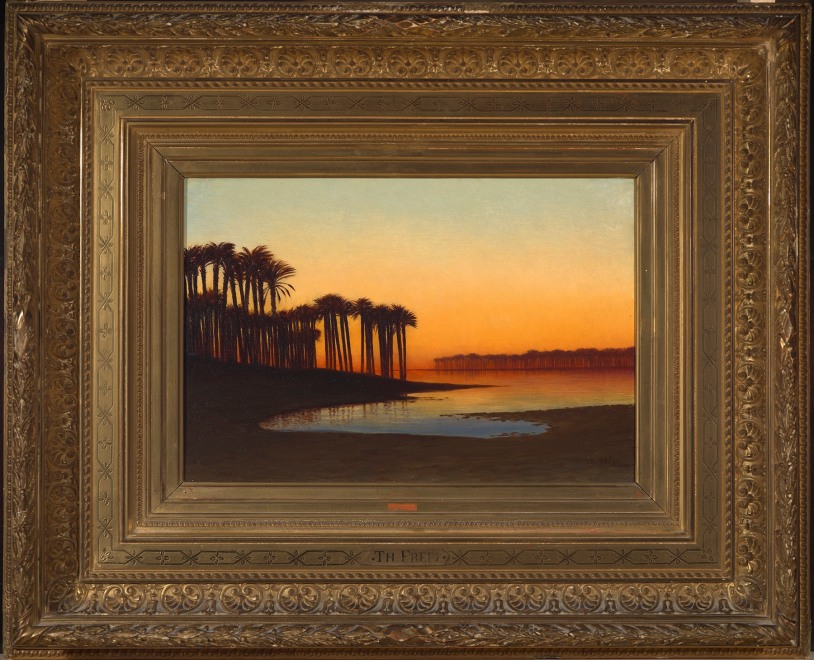Catalogue note
In this captivating painting by Charles-Théodore Frère, the enchanting beauty of the Nile River at sunset unfolds before the viewer. The canvas is alive with deep hues of orange and blue as the sun descends beyond the horizon, casting a warm glow across the landscape. Silhouetted against this brilliant sky, elegant palm trees stand tall and still, their dark forms contrasting beautifully with the fiery backdrop. The water of the Nile mirrors the sky’s radiant colors, creating a shimmering effect that reflects the last light of day.
For centuries, the Nile has been revered for its vital role in renewal and fertilization, captivating 19th-century artists who sought to capture its natural beauty and rich heritage as a symbol of life and the deep historical roots of civilization. Charles-Théodore Frère began his artistic studies in Paris under the mentorship of Jean-Léon Cogniet (1794-1880) and Camille Roqueplan (1802-1855), a connection that may have ignited his lasting fascination with Egypt. In 1832, Cogniet painted a portrait of Jean-François Champollion (1770-1832), the pioneering scholar who published a breakthrough in deciphering the hieroglyphs on the Rosetta Stone.
Frère’s fascination with the ‘Orient’, however, truly began during a transformative journey in Algeria from 1836 to 1839. After exhibiting two views of Algiers at the Paris Salon, he returned to the East again between 1851 and 1854, traveling through Egypt, Greece, Turkey, and Syria. Among these diverse landscapes, Egypt resonated with him like no other place. By 1853, he had established a studio in Cairo, where he found favor with members of the Egyptian government, earning him the esteemed title of ‘bey’.
These extensive journeys provided him with a wealth of imagery, featuring landscapes from North Africa, Egypt, and the Near East, which he exhibited at the Salon over the following three decades. He depicted the Nile multiple times, each work honoring Egypt’s physical geography and cultural significance. His passion for this culture drew him back one last time in 1869, allowing him to witness the historic opening of the Suez Canal, a fitting capstone to his deep connection with the region.
This note was written by Elsa Dikkes.




